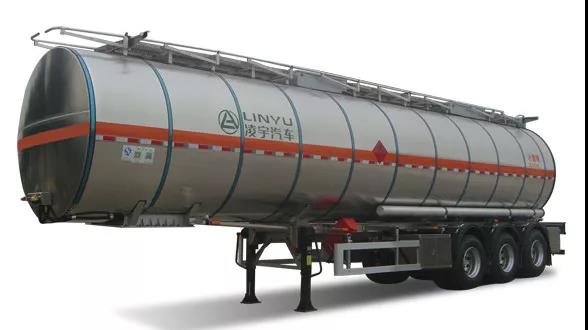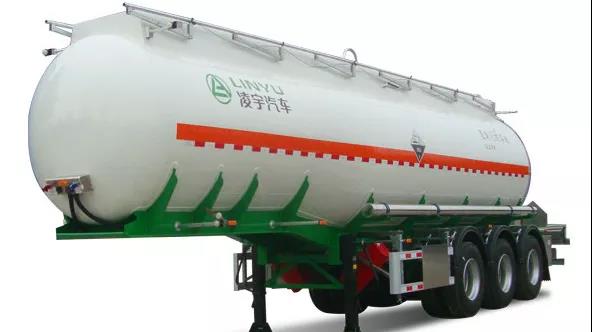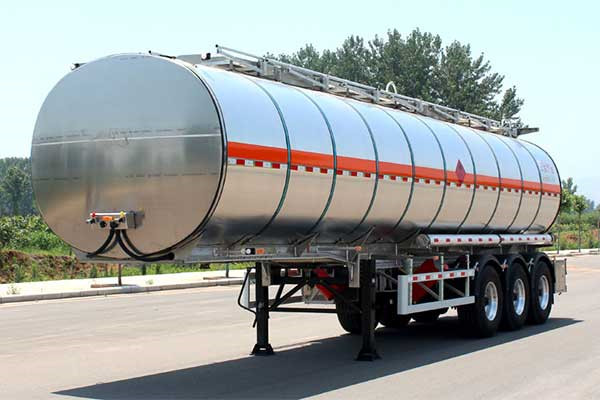As we all know, tank trucks must stay away from the fire. At the same time, drivers and escorts need to have professional knowledge on the safety characteristics of refined oil transportation, operating procedures for loading and unloading oil, etc.; in accordance with the relevant regulations of the national fuel tank truck transportation compulsory insurance, participate in the corresponding Insurance; establish and improve emergency plans for various emergencies, and carry out regular drills; the scale of special oil transportation vehicles must comply with the regulations of the local transportation management department to ensure the safety management of road transportation of dangerous goods and product oil, and to ensure that tank vehicles Safe loading and unloading and transportation of oil products.
(1) The relevant licenses such as the vehicle driving permit and the dangerous chemical transportation permit are complete. At the same time, it must comply with the safety device of the oil tank truck.
(2) The actual loading capacity shall not be greater than the approved loading capacity.
(3) The tank body and accessories are good and effective, and there is no damage or deformation that affects the strength, no serious corrosion, and no leakage. The tank body has passed the inspection by a qualified inspection department.
(4) The exhaust pipe is equipped with an effective fire cap, and the circuit system should have a device to cut off the main power supply.
(5) The tank body must be equipped with an electrostatic grounding terminal, and an obvious mark should be painted on the top of the terminal; a conductive rubber drag zone should be installed, and the oil should be kept touching the ground.
(6) Equipped with two dry powder fire extinguishers over 4 kg, which should be placed in a reasonable position and easy to use.

(1) Drivers and escorts should hold the qualification certificate and corresponding training certificate issued by the competent department of the local government.
(2) Must receive pre-job training on product oil safety characteristics, operating procedures for loading and unloading oil, knowledge of fire fighting, fire fighting equipment use methods, and emergency handling measures, etc., before starting the job after passing the examination.
(3) Regularly participate in job safety education, safety training, and plan drills.
(4) Wear anti-static overalls as required.
Before the tanker enters the warehouse, the following work should be done:
(1) Before entering the oil depot, the staff of the oil depot should inspect the fire caps, fire extinguishers, anti-static tapes and relevant licenses of the oil tank cars, and find the oil tank trucks that do not meet the safety conditions and refuse to enter the storage.
(2) Drivers and escorts should wear anti-static overalls, comply with the storage safety management system, and enter the storage after completing the storage procedures.

Before filling the tanker with oil, the following work should be done:
(1) The fuel delivery staff guide the tanker truck to park safely at an accurate location, and the driver assists the staff to verify the name, specification and quantity of the fuel according to the manifest. The fuel delivery staff checked that the equipment of the tank car was in good condition, the drain valve was closed, the engine was turned off, the car key was pulled out, and a warning sign was set in front of the tank car.
(2) Before filling the oil, connect the electrostatic grounding wire with alarm function, insert the crane pipe into the bottom of the tank and place the anti-spill alarm probe, the oil dispatcher will issue the filling instruction.
The following work should be done when loading refined oil:
(1) Strictly control the oil delivery speed, and prohibit splashing operations. In the event of abnormal situations such as thunder, lightning, fire, etc., immediately stop sending and receiving operations, and take corresponding safety measures in accordance with the instructions of the oil delivery staff.
(2) It is forbidden to use mobile phones and repair vehicles.
(3) Take effective measures to prevent oil spills.
(4) During the oil loading operation, the driver, escort and oil delivery staff must be present to monitor the whole process.
(1) After filling the oil, stabilize the oil for more than 2 minutes, pull out the crane pipe, close the tank mouth, remove the static grounding wire, and check and confirm by the oil delivery staff, remove the warning sign, and issue the instruction before the vehicle can leave.
(2) The tanker truck drives to the guard and can leave the warehouse after completing the relevant procedures.

Before the tanker truck enters the gas station for unloading operations, the following work should be done:
(1) Before unloading the oil, the staff of the petrol station guide the oil tank car into the parking space, prepare fire-fighting equipment, connect the electrostatic grounding terminal, check the lead seal of the oil tank car, check the variety and quantity of the oil products transported, and Set up a warning sign of "fuel unloading, no fireworks" in front of tank cars.
(2) Dangerous goods transportation oil tank truck can be measured after standing for 15 minutes; the driver connects the oil unloading hose to the oil unloading port of the oil tank car firmly, and the unloader connects the oil unloading hose to the oil tank unloading port of the gas station The connection is firm.
(3) The unloader checks to see if the fuel dispenser connected to the unloading tank has stopped refueling operations, and checks to see if the unloading pipeline is connected correctly and firmly. After both the unloader and the driver fulfilled the confirmation procedures, the unloader issued the unloading instruction.
The following work should be done when unloading oil:
(1) The unloader opens the oil tank unloading pipeline valve of the gas station, the driver slowly opens the tank truck unloading valve, and the unloader supervises and inspects the operation of the unloading pipeline, related gate valves and other equipment, and is ready to deal with emergencies at any time. Oil unloaders, drivers, and escorts must be present to supervise unloading during the entire process and are strictly prohibited from leaving.
(2) Strictly control the oil delivery speed, and prohibit splash-type unloading. In the event of abnormal situations such as thunder, lightning, fire, etc., immediately stop the unloading operation, and take corresponding safety measures in accordance with the instructions of the gas station unloader.
Safety management after unloading operation:
(1) After unloading oil, the unloader confirms that the tanker's oil has been unloaded. The driver closes the tanker gate valve and drains the remaining oil in the unloading hose. The unloader closes the unloading pipeline valve of the tank at the gas station and removes the unloading pipe.
(2) The unloader checks to see if the tank cover is closed and tightly sealed, removes the electrostatic grounding wire, removes the warning sign, issues instructions and guides the car to leave the station safely.
What are the safety regulations for tank trucks?
CIMC LINYU Invite You Join Us at the Canton Fair On Line
Address:Zhangheng Street corner Guanlin Road, Science and Technology Park, Luolong District, Luoyang City, Henan Province
E-mail:shiyk@lingyu.com
Phone:0086-379-65937678